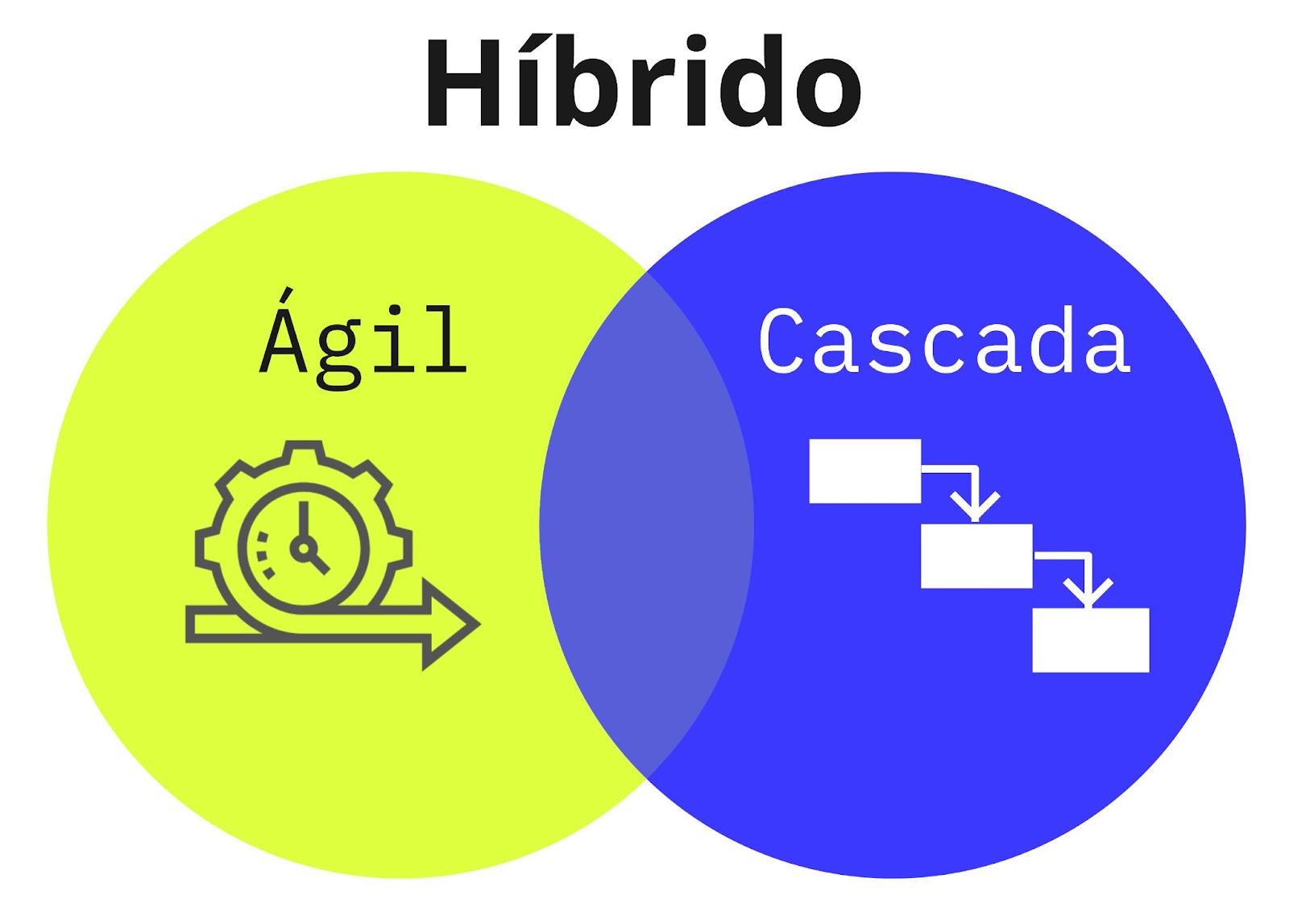How to implement a hybrid project management methodology?

As service providers, we often find ourselves in a dilemma about which methodology to adopt for project management. Especially when in our project office we adopt an agile methodology and our clients are oriented towards classic methodologies for their follow-ups.
In this case, the challenge is to find a middle ground between the two parties to reach agreements on how to determine the necessary actions to achieve the objectives set.

Benefits of a hybrid methodology for project management
Adopting a hybrid implementation methodology opens the doors to the agile world, flexibilizing traditional methodology processes without losing the essential of both approaches.
It also guides organizations to respond to customer needs and changes in the market. Additionally, it generates benefits such as:
Easy adaptation to project needs
Flexibility and adaptability to change make it possible to work in dynamic and difficult environments.
Reduction of uncertainty
Planning is the basis for organizing resources, coordinating activities, and controlling results for future sprints/iterations.
Minimization of risks
Interactions with users make it possible to detect potential risks. For example, during the project's execution, the work team can detect possible threats and improvement opportunities thanks to frequent communication with the client.
This hybrid approach, as a project management methodology, has emerged to change paradigms in the way companies execute projects, allowing schematic but flexible processes capable of meeting customer needs.
What is needed to implement a hybrid methodology for project management?
With this approach, it would seem that there is a magical formula or shortcut to adopt a hybrid methodology, and well, there really isn't such a thing. What I can mention are certain key elements that will help you in implementing a hybrid methodology, including:
Team mindset
To achieve the goal of implementing a hybrid project management methodology, the work team is fundamental. It is necessary to ensure that all members are high-performance, summarized in one word: self-managed. In Gluo, the work team meets the following characteristics:
Collaborate with the client to achieve objectives.
Propose options to reach said objective effectively.
Have analytical skills.
Are self-managed, i.e., they do not need a figure to tell them what to do, they know and execute it.
Use the best techniques to execute their tasks according to their role.
Maintain high-quality standards.
Have a high level of trust in their work team.
Do not be afraid to take risks.
Eliminate hierarchies in the work team.
Roles
A scheme that has worked for us to make projects successful is to consider different roles, which in our case are associated with three cells that I list below:
User Experience Area:
UX research
UX Designer
UI Designer
Analytics
Delivery Area:
Delivery manager
Business Analyst
Test Engineer
Technology Area:
Technical leader
Frontend developer
Backend developer
Client
I clarify that this is not an area of the organization and is a fundamental part of the team. I include it in this list because it allows "unblocking" the project at key moments, and its participation avoids any triangulation of information. Its fundamental roles are:
Product Owner: He is the owner of the product and is a representative with decision-making power for the business.
Stakeholders: All areas involved in the project and that are also capable of making decisions in favor of the project's success, support, marketing, service, legal, among others.
Each of them fulfills specific functions that I limit myself to describing in this post so as not to make it infinite. In another entry, I will talk about their functions and how, with the participation of all, they manage to work for the delivery of value and the fulfillment of project objectives.
Basic concepts of agile planning:
Kanban board
Tool that allows measuring the progress of team members' activities, such as Jira, Trello, etc.
Time tracking tool
It works to make measurements of what was initially negotiated with an estimate of efforts and what was actually executed and measured day by day.
Planning, execution and control tool
Indispensable to formalize in writing elements that will allow the project to succeed, such as objectives, activities, dependencies, risks, pending tasks, and so on. These tools can be as simple as an Excel sheet, or more complex like Kendis, or very visual like Miro.
Tools for communication with the team
Effective communication is a fundamental aspect to take care of in a project, and the important thing is to maintain transparency in the different channels in which the team decides to move in this regard.
The range can go from a simple WhatsApp group to more complex tools like Slack, and many times we overlook communication in management tools like Jira.
Let's not forget the formality of email, which serves to close agreements with a structure and organizational scope that an informal communication channel like those described above could not cover, in other terms, it would be the memorandum of this century for its accessibility.
With this broad context, we leave you with a taste of the implementation of a hybrid project management methodology that we will detail in a following part of this article.
Does this article make sense to you and would you like to have it all in your project office?
At Gluo, we can train your team in Project Management methodologies to ensure the quality of projects and deliver requirements on time and in the right form.


